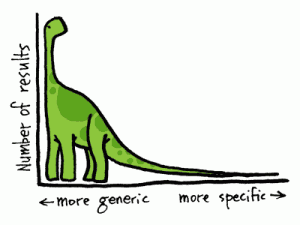How to Research Long Tail Keyword: List of Tools

Selection of right keywords is the key to successful SEO. However, there’re myths and confusions which block the way to find profitable long tail keywords. Some SEOs think that a keyphrase with 100 to 1000 searches per month and below 500,000 results in competition are perfect to target. However, it’s not a hard and fast rule. Search volume alone doesn’t determine the profitability; instead a variety of factors is responsible. These factors include nature of product, competitors’ analysis, research practices and better use of tools.
Instructions
-
1
Brainstorm:
Being an SEO you might want to jump directly to tools to generate long tail keywords, but that’s not the right way. You cannot target a customer if you cannot think like him, so take some time to brainstorm and think of all possible queries that can rise in your mind being a customer.
-
2
Do Competitor Analysis:
In order to move ahead you need to spy on your competitors and there are many keyword spying tools to assist you. Simply search the queries you just brainstormed and compile a list of competitors who are ranking at top for those queries.
Now spy on each of them one by one and find what other queries they are ranking for. Following tools will help you on your quest:
1- SEMRush.com: With free version, you can spy on 10 websites daily whereby you can find top 10 queries for which each website is ranking at top.
2 Keywordspy.com: It’s another tool similar to the above one with free limited access on daily basis.
Compare the results of both tools and you’ll have a much clearer picture.

-
3
Take Suggestions from Search Engines:
Google, Yahoo and Bing are good enough to suggest while you’re still typing a query. Do listen to them and take those suggestions into account.
While extracting keywords from Google suggestions, do not forget to set your location, in case if you’re targeting a local community.

-
4
Check Out Industry Trends:
Keeping an eye on industry trends is very important. Google Insight can help you find in depth about rising and declining trends over various time slots, locations and under different categories. Check for your targeted terms there too.

-
5
Check Your Website Analytics:
Having Google Analytics on your website is of utmost importance, so add it if you’ve not done it so far. The drilled down analysis from Google Analytics reveals the queries which your current visitors came by searching. Check out the metrics like number of visitors from long tail keywords, bounce rate, average time stay and pages per visit of these visitors etc. If you find your traffic from long tail keywords has higher bounce rate, less time stay, pages per visit and low conversions it means you’re going wrong and need to quickly fix things.
In order to fix this make sure, that you’ve relevant landing pages for long tail queries which bring visitors, product/service descriptions should be catchy with availability of images and videos, there must be call to action and a contact form. But all this needs to be done later; first extract the keywords for further research.
With a basic keyword research, you can tweak your website architecture, navigation and product content pages.
-
6
Use Tools for Long Tail Keyword Research:
By now you’ve a basic list of long tail keywords. All you need to do now is to find additional and some more relevant keywords with stats, so you can set up a traffic goal. Use following tools to optimize the process:
1- Wordtracker’s Free Keyword Tool: Although the paid version has more features, the free version (freekeywords.wordtracker.com) is worth trying. You can search a limited number of keywords per day so, use the tool wisely.
2- WordStream Free Keyword Tool: The free keyword tool by Wordstream (wordstream.com/keywords) will deliver keywords right in your inbox. You can search 10 terms daily, but the number of related long tail keywords depends on queries.
3- Google Keyword Tool: Once you’re done with extracting detailed lists of long tailed keywords from above tools. Insert those keywords to Google Keyword tool and get the estimated searches per month, competition and other stats, i.e. whether the searches are rising, declining or sustained. Ideally you should pick those which are sustained as they serve for long run.
-
7
Do Not Just Rely on Tools:
Although tools are great help, you should not rely 100% on them. For instance, for some queries, Google doesn’t have enough data, but those are very common questions about a product. Similarly, if it’s something new, tools won’t be able to assist! All you need to do is to keep an eye on surroundings and think like a customer.








